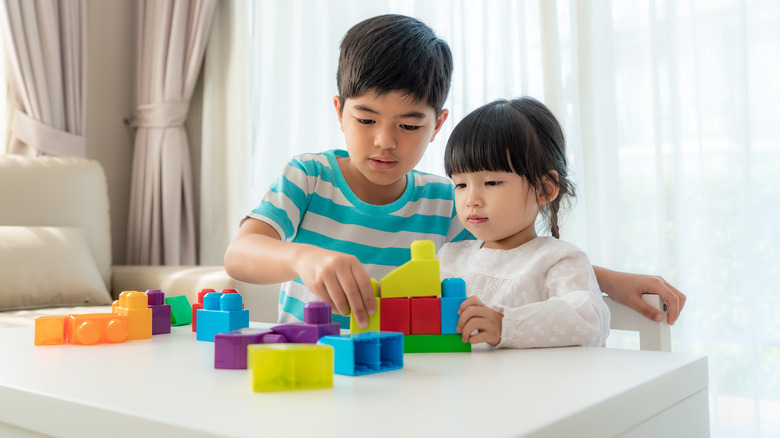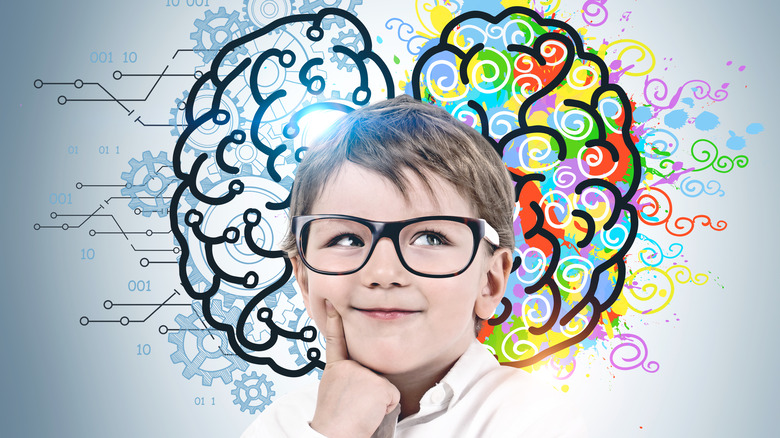How The Brains Of Only Children Compare To Those With Siblings
For decades, researchers have studied the differences between only children and children with siblings. In the 1960s, psychotherapist Alfred Adler developed a chart outlining personality differences depending on a child's place in the birth order, which is referred to as the Adlerian Overview of Birth Order Characteristics. Adler observed that only children tended to "be over-protected and spoiled." He added, "Likes being the center of adult attention. Often has difficulty sharing with siblings and peers. Prefers adult company and uses adult language."
Similar observations of only children have led to a phenomenon known as only-child syndrome, which came about in the late 19th century, as per Healthline. A questionnaire administered by child psychologists G. Stanley Hall and E. W. Bohannon found that only children shared a number of traits, including being spoiled, bossy, and selfish. However, recent research has somewhat debunked the existence of a syndrome and highlighted the benefits of being an only child. A 1986 review of existing literature carried out by psychologist Toni Falbo showed that only children tested favorably for intelligence, character, and achievements.
On the flip side, a 2014 study published in the Journal of Research on Adolescence found that sibling relationships are crucial for prosocial development, which can later extend to other family members and friends. However, this is dependent upon the presence and degree of sibling conflict. Recent research has started to delve deeper into the brain differences that exist between only children and those with siblings, and the results are surprising.
Only children showed a difference in gray matter volume
A 2016 study published in Brain Imaging and Behavior looked at the differences in only children and children with siblings in a groundbreaking way: by carrying out brain scans. Researchers examined a sample group of 303 college-age participants, half of who were only children. They placed participants in an MRI machine while having them carry out a series of cognitive tests that looked at intelligence, personality, and creativity.
The results of the study showed that only children were more flexible than those with siblings, while also less agreeable. The surprising part came from what researchers found on the brain scans; namely, only children had a higher volume of gray matter in the parietal lobe, which is associated with language perception and processing, as well as cognitive flexibility. To explain the lack of agreeableness, the researchers pointed to a decrease in gray matter in the medial prefrontal cortex, where emotional regulation and social sensitivity take place. They hypothesized that this could be due to excess attention from caregivers and a lack of the continuous social practice that comes with having siblings.
It should be noted that the results of this study aren't conclusive, as explained in the British Psychological Society Research Digest. The sample size, which consisted of young, educated adults in China, could have been more diverse and representative of the greater population. Additionally, the researchers were only able to guess the meaning of the differences discovered in brain structure.


